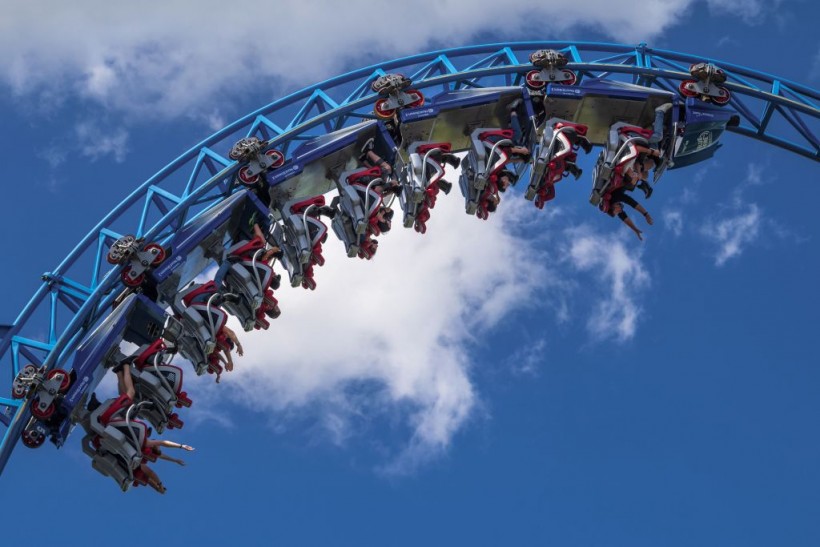A Lithuanian designer has conceptualized a unique approach to end lives with a combination of "elegance and euphoria" - a roller coaster designed to induce cerebral hypoxia.

(Photo : PATRICK HERTZOG/AFP via Getty Images)
TOPSHOT - People wearing protective masks enjoy the Blue Fire roller coaster at Europa-Park, Germany's largest theme park, in Rust.
Providing Perspective of Intersection of Art, Proactive Ideas
The Euthanasia Coaster, crafted by a former amusement park ride designer, features seven Euler spirals that subject riders to prolonged high gravitational forces, surpassing the limits typically tolerable by the human body.
Interesting Engineering reported that the artistic concept aims to provide a distinct perspective on the intersection of art, design, and provocative ideas.
Traditional roller coasters, including the Euthanasia Coaster, have an inherent risk of causing riders to faint, a phenomenon related to the exposure to diverse gravitational forces known as G-forces.
While individuals typically experience the consistent acceleration of Earth's gravity, roller coasters introduce varying G-forces through their acceleration, deceleration, climbs, and descents.
These sudden shifts in acceleration have the potential to redirect blood away from the brain, leading to a decrease in blood flow and triggering a condition called hypoxia, characterized by the brain's oxygen deprivation.
Hypoxia manifests in symptoms such as tunnel vision, dizziness, and, in extreme cases, blackouts. Understanding the impact of G-forces on the human body sheds light on why some riders may faint during roller coaster experiences.
Developing Euthanasia Coaster
Julijonas Urbonas, an artist, designer, and researcher hailing from Lithuania, is the creative mind behind the Euthanasia Coaster. Notably, Urbonas is the founder of the Lithuanian Space Agency, focusing on the exploration of space architecture and "gravitational aesthetics."
Before delving into space-related ventures, Urbonas had a stint as a ride designer at an amusement park in Klaipeda, Lithuania. His involvement extended to managing the park from 2004 to 2007, showcasing a multifaceted background in design and entertainment.
Urbonas holds academic achievements, boasting a B.A. in Visual Design and an M.A. in Design from the Vilnius Academy of Arts in Lithuania. Furthermore, he earned a Ph.D. in Design Interactions from the prestigious Royal College of Art in London, UK.
Also Read: Thrilling Cure: A Roller Coaster Ride Can Help Get Rid Of Kidney Stones
The Manual reported that Urbonas shared that the Euthanasia Coaster, while initially conceptualized for euthanasia, could also serve as a method of execution.
In a particularly contentious statement, he envisioned transforming the ride into a "spectacle" intended for the family members of those choosing euthanasia or the audience witnessing the execution of criminals sentenced to capital punishment.
The Euthanasia Coaster gained notable attention when introduced at the HUMAN+ exhibit in the Science Gallery in Dublin in 2011 and later at the Centre de Cultura Contemporània de Barcelona in 2015.
Despite its notoriety, the concept faced scrutiny, with varied reactions ranging from individuals volunteering to "test" the ride if constructed to critiques highlighting design flaws.
Urbonas acknowledged that potential survivors might undergo uncontrolled movements in their limbs as consciousness returns and oxygenated blood circulates more vigorously through the brain.
Related Article: Doctor Created 3D-Printed Euthanasia Machine That Can End Life Painlessly






